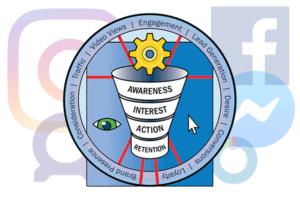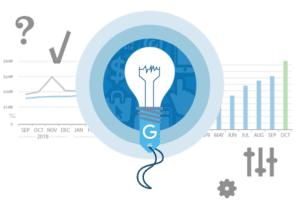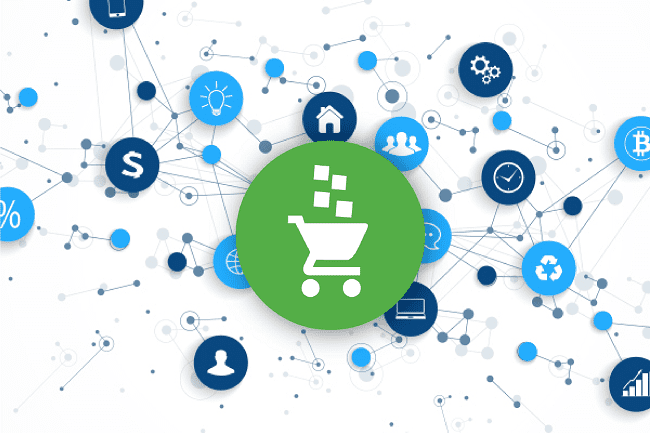As 2020 draws nearer and nearer, it’s a good idea to take a look at the trends that will shape how ecommerce brands will navigate the digital future. Facebook Attribution, Google Smart Shopping, and Amazon DSP are three of these major 2020 marketing trends.
Let’s take a look at these top 2020 marketing trends, as well as some additional resources that can help ensure your brand is ready to grow profitably and dominate the competition in 2020!
Facebook Attribution
 Far too many retailers look at Facebook as simply a play for brand awareness or engagement, with the false assumption that ads are underperforming based on a last-touch attribution model. The truth is that a last-touch attribution model is no longer viable with modern consumers.
Far too many retailers look at Facebook as simply a play for brand awareness or engagement, with the false assumption that ads are underperforming based on a last-touch attribution model. The truth is that a last-touch attribution model is no longer viable with modern consumers.
Don’t limit your brand by relying only on a first- or last-touch attribution model. There are many touchpoints along a buyer’s journey. You have to look at the full journey to be successful.
You need to develop a sales funnel specifically for Facebook while also aligning with touchpoints on all other marketing channels. Facebook’s new Attribution interface makes this easier by allowing marketers to view performance across many digital channels including Google & Bing whiles till seeing Facebook’s people-based attribution model.
Note: Facebook’s default attribution model only gives credit to the last Facebook view or touch from an ad – which is highly unlikely to be the only touchpoint the consumer made in their entire journey. Only looking at last-touch when determining the effectiveness of various marketing campaigns is a fallacy. A focus on top-of-funnel awareness is essential in gaining the traffic that will convert with bottom-of-funnel campaigns.
ROI Revolution has been leveraging the Facebook Attribution tool since late 2018 – so we have had plenty of time to learn its functionality and best use cases.
We’ve seen Facebook Attribution become an increasingly reliable and powerful source for measurement for our clients. Analyzing all sources at once and understanding what touchpoints provide the most value has proven extremely useful. It’s allowed us to credit platforms for driving the first, middle, and last interactions with users.
Knowing which levers to pull when trying to boost a segment of the conversion funnel has informed our budget allocation strategies and ultimately generated increases in our clients’ bottom lines. We strongly encourage our clients and all digital marketers to leverage this tool (amongst others) as they decide where and how their digital ad spend is driving performance.
If you want to learn more about Facebook Attribution, check out the following resources:
- Facebook Attribution: A Timely Tool for Online Advertisers
- Why Social Media Needs to Be at the Top of Your Marketing Funnel
- Measuring Your Brand’s Cross-Channel Success: Key Attribution Strategies for Revenue Growth on Google, Facebook, & More (Webinar Replay)
Google Smart Shopping
 As consumers’ path to purchase has become more complex than ever, so has campaign management. Between audience & device targeting, bid adjustments, geolocation & demographic targeting, remarketing lists, and more, successfully managing campaigns requires a significant time investment.
As consumers’ path to purchase has become more complex than ever, so has campaign management. Between audience & device targeting, bid adjustments, geolocation & demographic targeting, remarketing lists, and more, successfully managing campaigns requires a significant time investment.
Cue Google Smart Shopping.
Google Smart Shopping allows advertisers to create campaigns that target audiences who are most likely to buy, wherever they may be. As a Shopping campaign that uses machine learning to automate bids, find audiences, and show your ads across the Search Network, Display Network, YouTube, and Gmail, it exists at the intersection of smart display and product listing ad (PLA) shopping.
Smart Shopping ads make it easier for advertisers to reach their target audience by automating bids, custom-matching audiences based on behavioral shopping signals, and showing ads across multiple Google platforms with the goal of maximizing conversions.
You simply provide your product feed data and a Display ad with your own image assets & text. Google’s algorithm takes it from there, using machine learning to determine the best combination of text & images to show to the most relevant audience.
Download our latest report, Google Smart Shopping: AI + Machine Learning for Profitable Brand Growth, to learn about using this campaign type to eliminate guesswork and increase conversion value.
Amazon DSP
 Now that digital advertising has surpassed traditional advertising in the US, online success has become crucial to brand growth. In addition to that, more product searches now start on Amazon rather than Google. Amazon DSP is a demand-side platform featuring display & video ads that can both reach new shoppers with prospecting ads and re-engage shoppers who have already interacted with your brand.
Now that digital advertising has surpassed traditional advertising in the US, online success has become crucial to brand growth. In addition to that, more product searches now start on Amazon rather than Google. Amazon DSP is a demand-side platform featuring display & video ads that can both reach new shoppers with prospecting ads and re-engage shoppers who have already interacted with your brand.
Amazon DSP is crucial for upper-funnel marketing and brand awareness. And with 98% of digital ecommerce shopping sessions ending without a purchase, if you ignore every who isn’t making a purchase, you’re ignoring 98% of our opportunities to make an impact on a customer.
Further, 10x more high-intent shoppers can be reached with display ads vs. search alone. Amazon DSP is a campaign strategy that you shouldn’t be putting to the wayside and saying, “We’ll do that eventually.” If you don’t start now, you’re missing out on valuable revenue and brand growth.
Amazon DSP allows brands to leverage Amazon’s first-party data on how customers get to a purchase point, gain access to exclusive ad inventory on Amazon owned & operated sites, uncover untapped segments of your customers, and measure ad effectiveness through retail insights to see how your brand performed before & after a campaign.
With its ability to reach customers at all parts of the buyer journey, Amazon DSP is a key tool in your arsenal in an industry where programmatic display use is accelerating rapidly.
To learn more about Amazon DSP, you can check out these additional resources:
- Unlock Your Brand’s Potential With Amazon DSP: Customer Acquisition Strategies for Profitable Brand Growth (Webinar Replay)
- Amazon Stores + Sponsored Brands: Taming the Two-Headed Monster for Marketplace Profitability
Wrapping Up 2020 Marketing Trends
These are just three of the major 2020 marketing trends we can expect to see grow in 2020.
And if you’re interested in learning even more about Facebook attribution, Google Smart Shopping, and Amazon DSP, you’re in luck. Our team will be traveling the country next year for the 2020 Brand Appétit Mastermind Tour!
At this series of executive mastermind events, we’ll discuss new tools to unlock full-funnel attribution insights & new customer acquisition, scalable opportunities to accelerate your product sales & revenue, new AI-powered campaign technology to boost conversions, and more.
Don’t be left in the digital dust. Be among the innovative brands armed with new strategies to steal market share and grow your profitable revenue.



